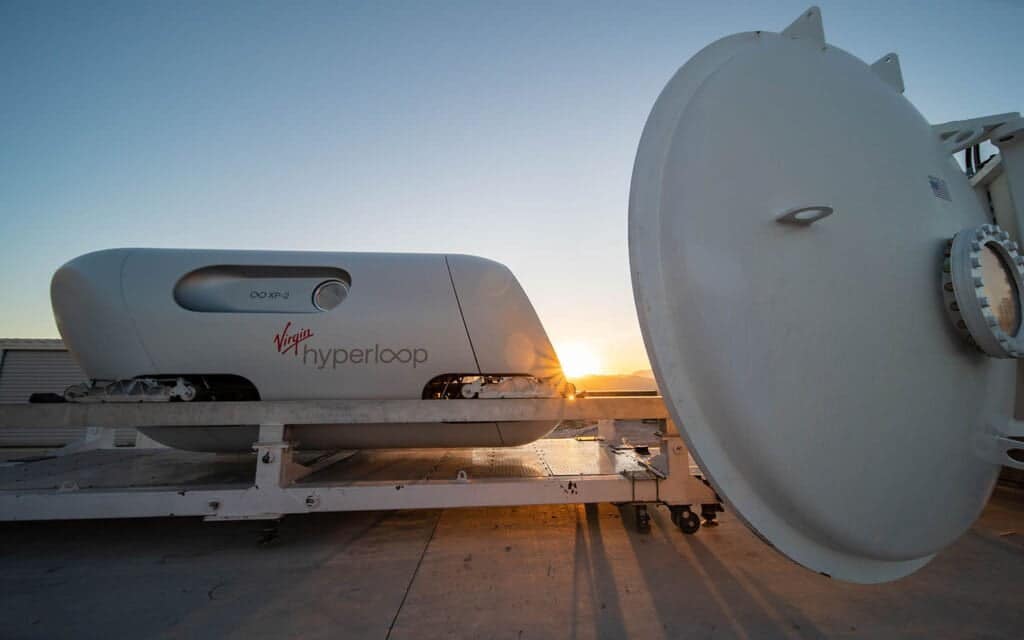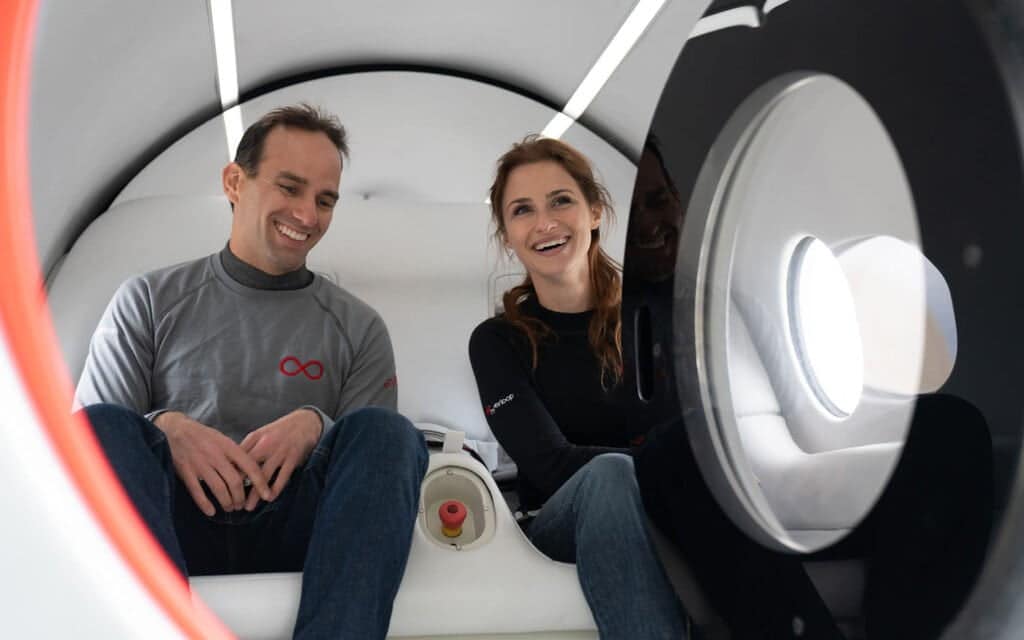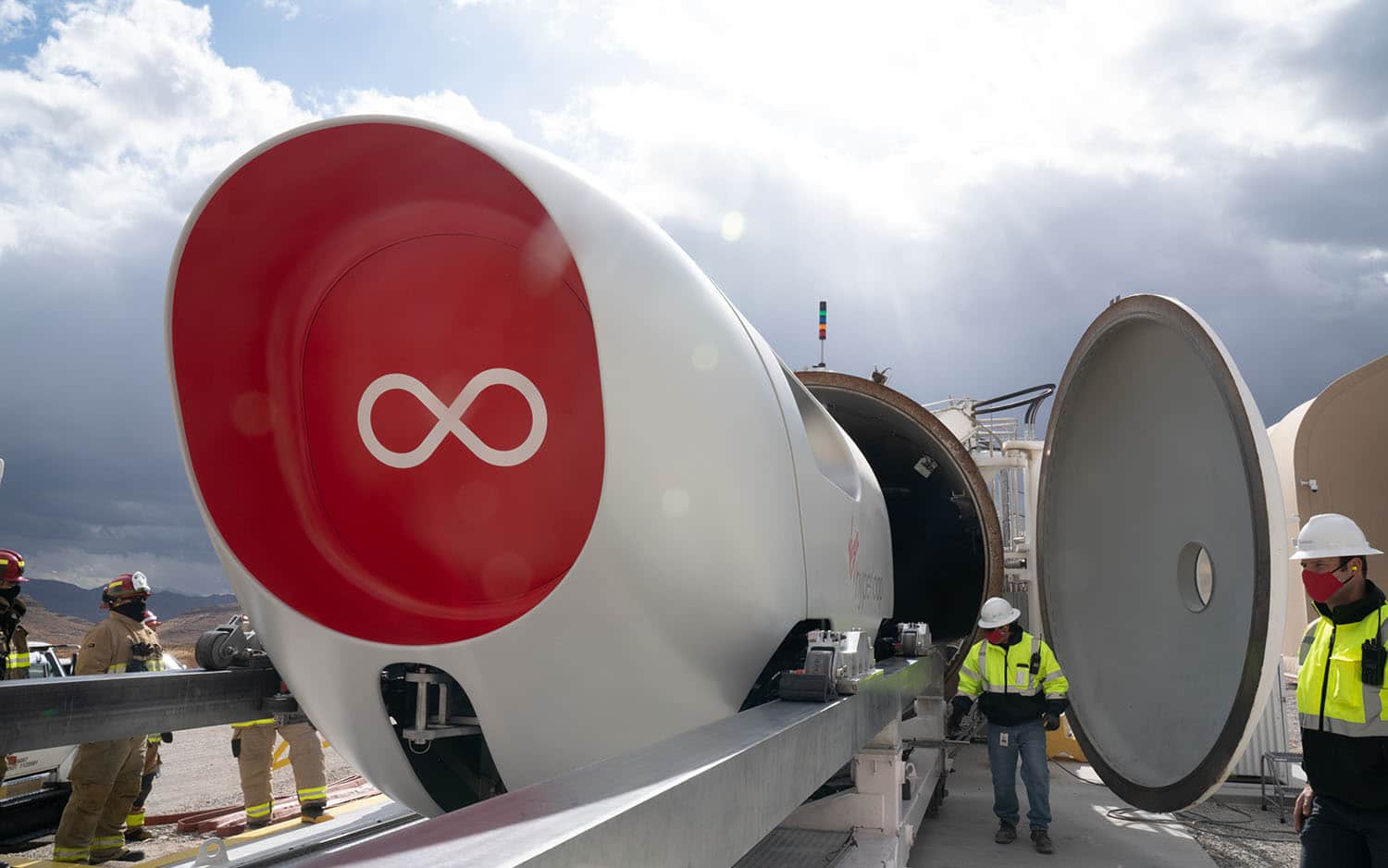Hyperloop, the ultra-fast transportation system that pushes cabs at the speed of an airplane through purpose-built tubes took a step forward over the weekend after Virgin Hyperloop conducted its first test ride with passengers.
A video released by the company shows Virgin Hyperloop's chief technology officer, Josh Giegel, and the director of customer experience Sara Luchian buckled up for the first hyperloop booth test, which took place at the 500-meter DevLoop test site in Las Vegas, Nevada.
The two-seat passenger cabin with Giegel and Luchian inside reached a top speed of 107 mph (172 km/h). The video shows both passengers in the Virgin Hyperloop test smiling as the cabin travels along the track.

A step at a time
The Virgin Hyperloop test cabin was much slower than the final speed of 760 mph (about 1.223 km/h) that is the goal of this technology. Virgin Hyperloop said the test “is to show that passengers can travel safely in a Hyperloop vehicle.” Previous tests without passengers achieved a higher speed: 240 mph (386 km/h).
When we started in a garage more than six years ago, the goal was simple: transform the way people move. Today, we have taken a giant leap towards that ultimate dream, not just for me, but for all of us who are looking towards such an ambitious goal.
Josh Giegel, Virgin Hyperloop Chief Technology Officer
Luchian, for her part, declares that the Virgin Hyperloop test “is about much more than just technology. She's about the passenger experience, which ties everything together. What better way to plan for the future than to experience it firsthand?”

The next steps after the Virgin Hyperloop test
The two-seater test cabin was designed with safety in mind, and following the successful test, the team will now focus its attention on incorporating many of its features. The goal is to integrate these solutions into the 28-seater "pod" planned for commercial racing. For Virgin they could start by 2030, subject to overcoming any technical challenges (lots of straight sections and large curves are needed) and regulatory obstacles (passing permits on all these terrains could be a nightmare).


